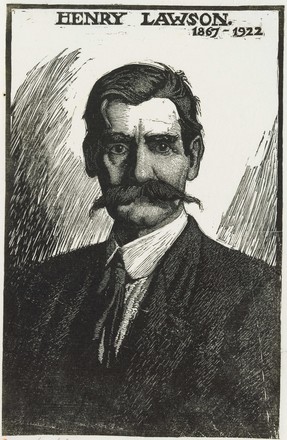
Portrait of Henry Lawson
1922
Woodcut on paper
Bequest of Sir William Dixson, 1952
DL PXX 85, Volume 10, 16b
Woodcut on paper
Bequest of Sir William Dixson, 1952
DL PXX 85, Volume 10, 16b
Lawson’s was a sad, slow demise. He was one of Australia’s most acclaimed and cherished poets and writers, yet for many years he suffered from ill health, depression and alcoholism. On 2 September 1922, at the age of 55 he died of a cerebral haemorrhage.
Lionel Lindsay published this woodcut in the week Henry Lawson died. The print is based on a number of drawings that Lindsay made of Lawson some 20 years before, around the turn of the century when the two men first met. Lindsay had arrived in Sydney to work as an illustrator, and he and Lawson often contributed to the same periodicals that were published in Sydney, notably the Bulletin and the Lone Hand.


 Back to list
Back to list